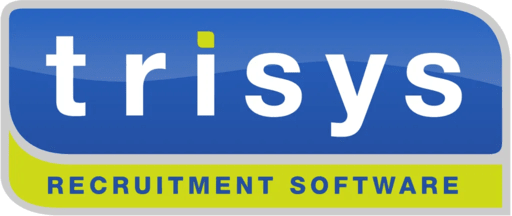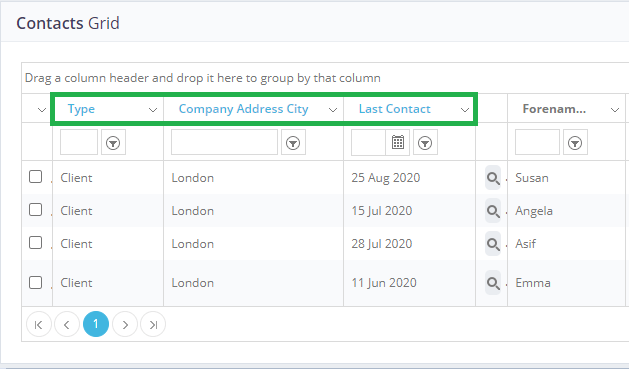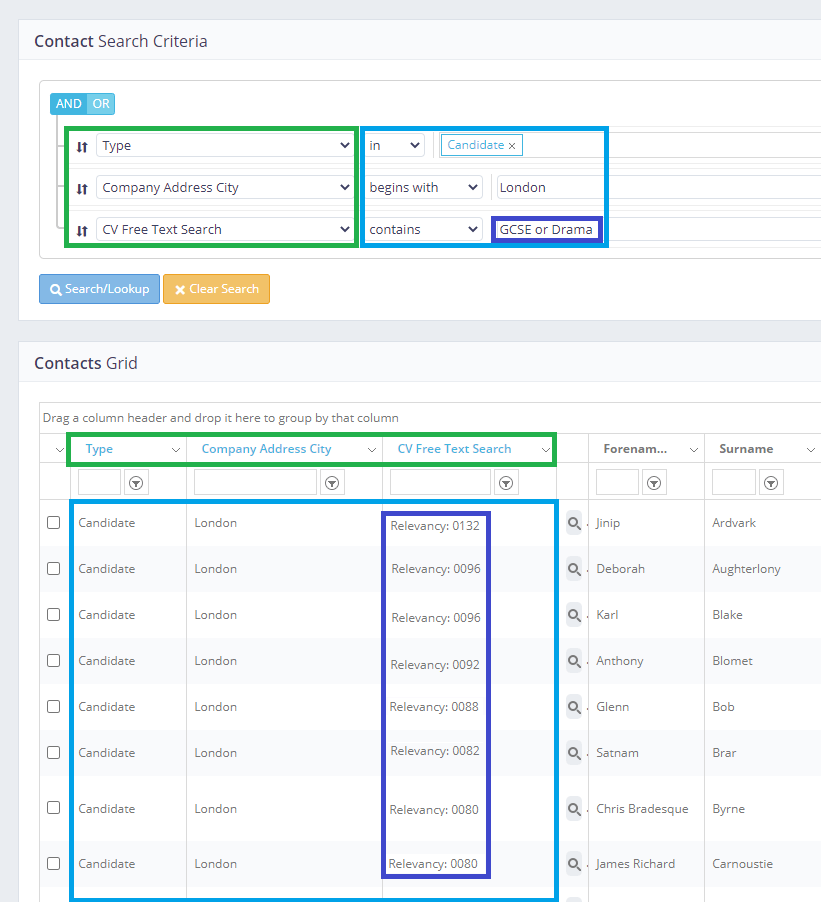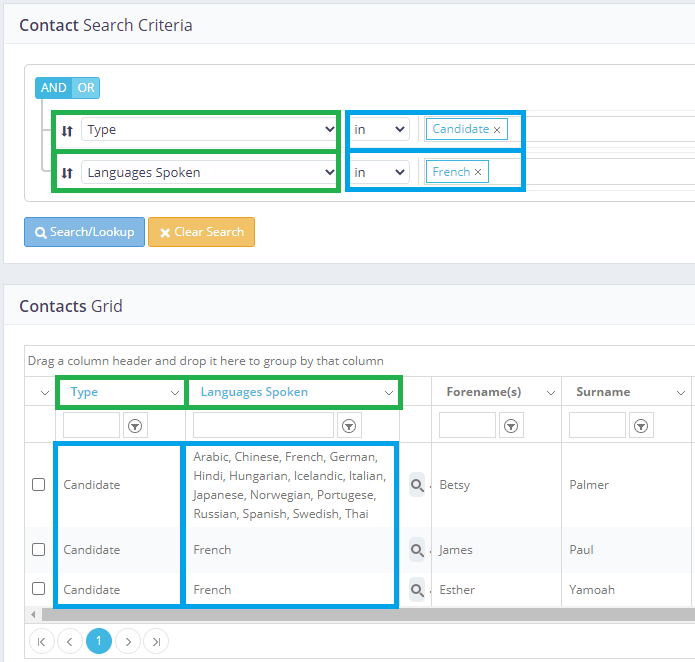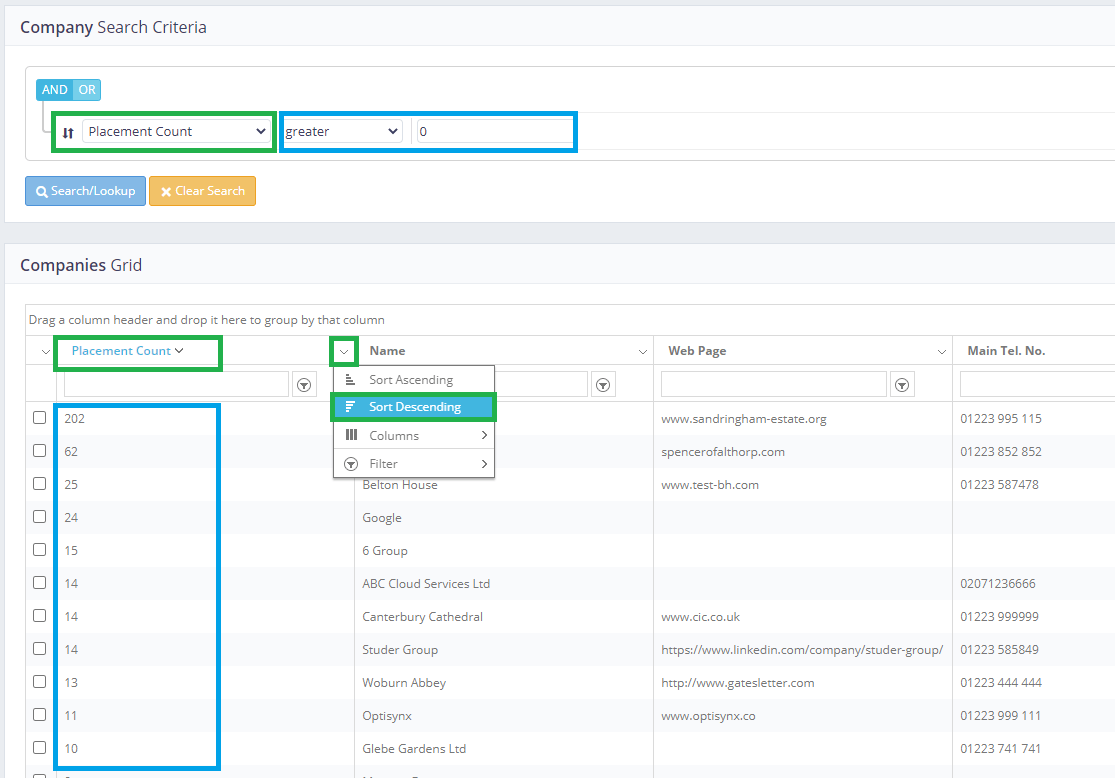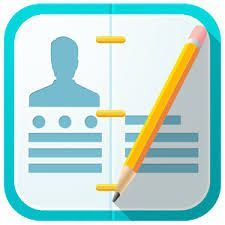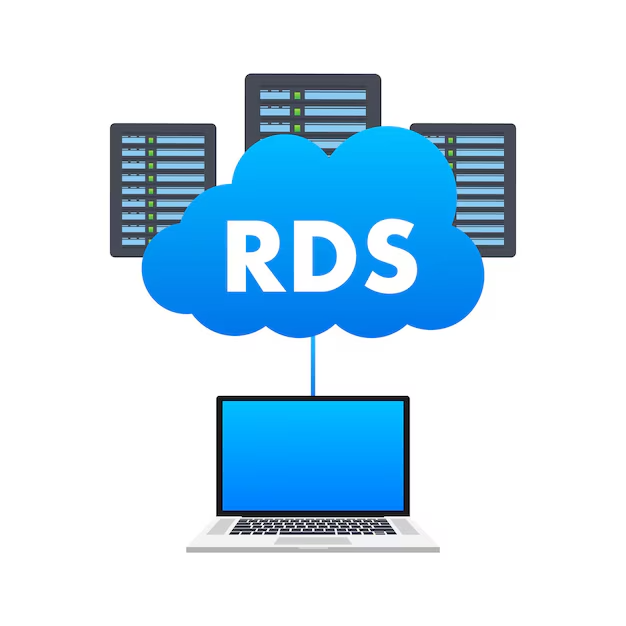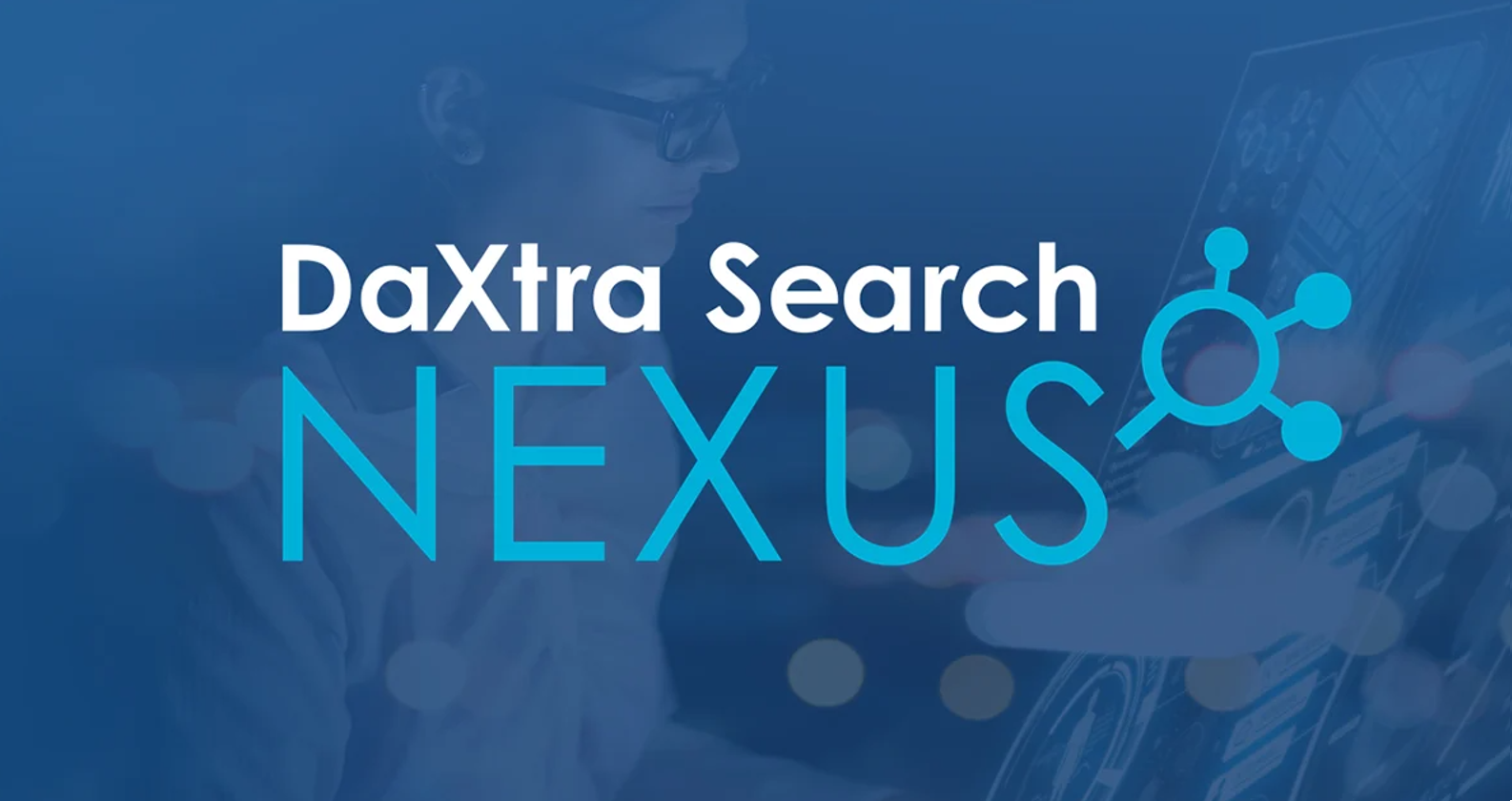Dynamic Search Results in TriSys Apex
Francisco Janes • 28 August 2020
What are dynamic search results and why do they matter?
On 28/08/2020 we have rolled out a transparent automatic global update to all TriSys Apex customers, enabling our newest API-driven Dynamic Search Results technology, designed to enhance your database searching experience and further optimise the value of your Contact, Company, Requirement, Placement and Timesheet data.
This automatic update falls in line with our promise to deliver continued transparent updates to TriSys Customers, enhancing their service and providing functionalities which have traditionally only been found in the TriSys Enterprise Windows Desktop Application system.
From this moment onwards, when you run a search using TriSys Apex, the search results Grid will contain Dynamic fields which are automatically inserted as columns in the leftmost area of the Grid (as highlighted in the example below).
The reason why these fields are called "Dynamic" is simple: they are automatically/dynamically added as fields into the search results grid
when you use these fields as part of your
search criteria.
The example below illustrates a Contact search with 3 fields (numbers
1,2,3).
For each of these 3 fields, note the search criteria in blue (letters A, B, C).
As you run the Search, you will see the new Dynamic Fields (1,2,3) added to the left of the search results Grid.
Also note how each dynamic field contains the matching search results (A,B,C) which is known as "evidence-based search results" technology, showing the actual data matching the search criteria (making the search results more comprehensive which in turn both speeds up and increases the quality of your decisions).
When searching Candidates, you will very often search one or multiple keywords and text expressions within their CV's. This feature is now enriched thanks to a CV Free Text Search intelligent ranking algorithm returning the relevancy (or 'Ranking') of each candidate according to the keyword(s) used in the search criteria, helping you determine the most suitable candidates/search results. This is shown in purple below.
When searching candidate Skills or Attributes (as shown in the example below) you will also benefit from the power of Dynamic Search Results, where you can instantly confirm which candidates speak a given language (as a Skill example) however you are also presented with all other relevant Skills associated with the same Skill Category - so in the example below whilst you may be looking for French speaking candidates, note how the first candidate in the search results speaks French and also multiple other languages, which could possibly make this a preferential candidate should the company looking to hire have additional language requirements or international offices, etc.
Dynamic and evidence-based search results help you find data with greater accuracy, in addition to adding value to existing data and helping you optimise each database search, every time.
All fields in your TriSys database support the new Dynamic Search Results technology.
You could also run a search for all Companies with a certain number of placements (for example all companies with at least 1 Placement) a simple search which will help you detect and target your best customers and which will likely help you generate additional opportunities with your best customers (note how the search results are sorted Ascending, which will place the companies with the highest number of Placements at the top of the search results). From here you could easily run a Mail Merge to some or all Clients within each Company and promote your services further.
Dynamic Search Result Fields and Evidence-based Search Results technology is designed to help recruitment consultants run simple and comprehensive boolean searches, through a familiar, easy to use interface, offering time-savings and better search results which translate into superior client and candidate relationship management and recruitment workflow productivity.
What are you waiting for? Login to your TriSys Apex database today and re-run any Search or Saved Search to see the new dynamic search technology in action and experience the benefits right now.
Would you like to discuss the new search results technology further, do you have any questions and/or would you like to empower your team with additional knowledge to make the most of TriSys Recruitment Software?
Get in touch

We are planning some very exciting innovations and enhancements to the products and services of TriSys Business Software in 2024: TriSys Apex 2024 Our cross-platform web browser recruitment CRM was released in 2014 and uses the TriSys cloud platform to process all its data and functionality. Customers with any type of computer, tablet or phone can access their recruitment data and conduct sophisticated workflows to drive their business forward, wherever they are and at any time. We plan a number of innovations this year, including the port of the temps booking sheet, and integration of AI. TriSys 2024 The latest version of our premiere windows desktop recruitment CRM is now available to all existing customers. This application was first released in 1992 and is a rock-solid enterprise grade recruitment business app. For customers on the 2023 version, the application will automatically upgrade. All new features will be documented in the coming months. Our SDK is still the only recruiting software toolkit for Microsoft .Net. TriSys for the Microsoft Store was delivered using Visual Studio 2022. Flexiva We have devised a concept we are calling Flexiva, hosted at flexiva.co.uk , which is a flexible visual app builder for enterprise cloud business software, utilising the new breed of no-code or low-code tools. Flexiva will be be a sophisticated app builder, initially housed within TriSys Apex , which will evolve to replace the existing Developer Studio , by providing higher level tools to allow business people, rather than programmers, to construct powerful line-of-business applications which connect to any ReST API. TriSys Cloud Platform Our cloud infrastructure platform was conceived and built in 2002. It has grown and matured to comprise literally hundreds of cloud servers distributed across the planet. Customers use our platform to store and process their large corporate data assets, via our software products and services. Expect more integration with world class web services, including artificial intelligence, through our Web API . Third Party Integrations The TriSys Recruitment Software Platform enables unlimited integration flexibility including standard and complex integrations across multiple popular third party industry suppliers enabling you to use TriSys as a process hub offering a single source of truth. We have recently built a sophisticated integration with Zapier , and this year we will fully integrate with additional best-of-breed third party business platforms including artificial intelligence (AI). TriSys Mobile Suite Recruiters can access their recruitment database from their tablet and phone by installing our app , however the mobile landscape is changing with a new class of 'app-builders' utilising low-code or no-code technologies. Due to the power and flexibility of the TriSys Web API, Recruitment agencies can cost-effectively commission their own dedicated and branded mobile app to engage with their clients and candidates. A new truly-native version of TriSys mobile will be released to the stores in Q1 2024. TriSys Web API Almost all our recent innovations centre around our web application programming interface which provides a fully secure set of programmable end-points not just into the TriSys Cloud Platform, but also to a host of third party global ecosystems, to provide customers with unlimited flexibility to deploy a range of sophisticated recruiting business benefits. Web API plans for 2024 are to add mobile app-specific functionality allowing the TriSys platform to reach a wider range of customers by utilising AI. TriSys Platformix Five years ago, we introduced a website builde r technology utilising a mix of cloud platforms, which we called Platformix . This is the successor to Web Jobs in that it is a full recruitment website content management system (CMS) with very tight integration with the TriSys recruiting database, plus state of the art blogging, SEO compliancy, and analytics. We will continue to invest in building TriSys Widgets to allow our customers to build high engagement web portals. We will also continue integration with Stripe to allow Gig-Economy services to be built for our customers. TriSys Open Source We now have full GitHub source code integration with all our software build tools, meaning that TriSys is now the only commercial recruitment software vendor to offer an open-source model. From 1st January 2024, existing customers are able to license TriSys' source code to build their own highly-specific recruitment CRM app for desktop, mobile and web. We are also planning to partner with other organisations to build complex line of business applications for all industries, based upon the thousands of man-years development and testing which has been invested in the TriSys Platform code base. TriSys Remote Desktop The original TriSys ASP was launched 22 years ago , and comprises a windows hosted desktop running on our cloud. Last year we launched a Windows 11 version with full compatibility with Microsoft Office 365 allowing customers to have full control over the apps they can install. This year we will continue to support all Microsoft supported versions of Windows.

